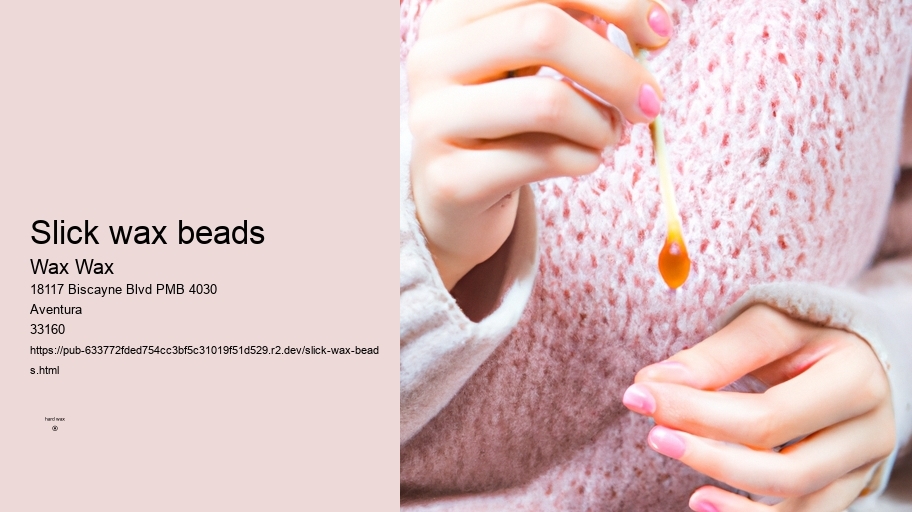

When it comes to managing any discomfort during your first bikini wax, there are a few things you can do to make the experience more bearable. Firstly, try taking an over-the-counter pain reliever (such as ibuprofen) about 30 minutes before your appointment. This can help reduce any pain or inflammation caused by the waxing process. Additionally, be sure to communicate with your esthetician if you are feeling any discomfort during the waxing session. They may be able to adjust their technique or offer suggestions for minimizing pain. Finally, remember that the more frequently you wax, the less painful it becomes as the hair follicles weaken over time!
The rate at which your hair grows plays a significant role in how often you should get waxed. Get the best hard wax products from Wax Wax. Some individuals have faster hair growth than others, meaning they may need to wax more frequently to maintain smooth skin.
Attention to detail: One of the main advantages of professional waxing is the attention to detail that estheticians provide. They can customize the treatment based on your specific needs and preferences, ensuring a thorough and precise hair removal process.
Possibility of improper technique leading to ineffective results
Moisturizing and Soothing the Skin
Check your skin for any cuts, scratches, or irritations before applying the wax.
Waxing is the process of hair removal from the root by using a covering of a sticky substance, such as wax, to adhere to body hair, and then removing this covering and pulling out the hair from the follicle. New hair will not grow back in the previously waxed area for four to six weeks, although some people will start to see regrowth in only a week due to some of their hair being on a different human hair growth cycle. Almost any area of the body can be waxed, including eyebrows, face, pubic hair (called bikini waxing or intimate waxing), legs, arms, back, abdomen, chest, knuckles, and feet. There are many types of waxing suitable for removing unwanted hair.
If sun exposure cannot be avoided, it is important to apply a broad-spectrum sunscreen with at least SPF 30 on the waxed areas, wear protective clothing, and seek shade whenever possible to minimize potential damage and irritation.
Despite its benefits, waxing also has drawbacks such as ingrown hairs and minor bleeding. Additionally, individuals with certain medical conditions or taking specific medications may be at higher risk for skin irritation or complications during waxing.
4. Will my hair grow back thicker after waxing?
Waxing over the same area multiple times can lead to skin irritation, redness, and even burns. It is important to follow proper waxing techniques to minimize discomfort and potential damage to the skin.
The modern practice of waxing has evolved over time, with different techniques and types of wax available. Strip waxing, which uses a thin layer of wax applied to the skin and removed with a cloth or paper strip, is one common method. Another method is stripless waxing, where hard or film wax is applied directly to the skin and removed without the use of strips.
Despite its benefits, waxing also has drawbacks such as ingrown hairs and minor bleeding. Additionally, individuals with certain medical conditions or taking specific medications may be at higher risk for skin irritation or complications during waxing.
Discussion on the benefits of exfoliating after waxing to prevent clogged pores and promote skin regeneration
Waxing is the process of hair removal from the root by using a covering of a sticky substance, such as wax, to adhere to body hair, and then removing this covering and pulling out the hair from the follicle. New hair will not grow back in the previously waxed area for four to six weeks, although some people will start to see regrowth in only a week due to some of their hair being on a different human hair growth cycle. Almost any area of the body can be waxed, including eyebrows , face, pubic hair (called bikini waxing or intimate waxing), legs, arms, back, abdomen, chest, knuckles, and feet. There are many types of waxing suitable for removing unwanted hair.

Overview of the different types of waxes available
3. Are there any differences in application techniques between hard and soft waxes?
In effect this means, choosing the right exfoliation products tailored to your skin type is essential before and after waxing to achieve optimal results and maintain healthy-looking skin.
Top recommended post-wax products for irritated skin
When meeting with your esthetician for your first bikini wax, it is important to communicate openly about any concerns you may have. Your esthetician will guide you through the process and answer any questions you may have before beginning the treatment. It's normal to feel nervous or apprehensive, but remember that your esthetician is a professional who is trained to provide a comfortable experience for you!
The modern practice of waxing has evolved over time, with different techniques and types of wax available. Strip waxing, which uses a thin layer of wax applied to the skin and removed with a cloth or paper strip, is one common method.